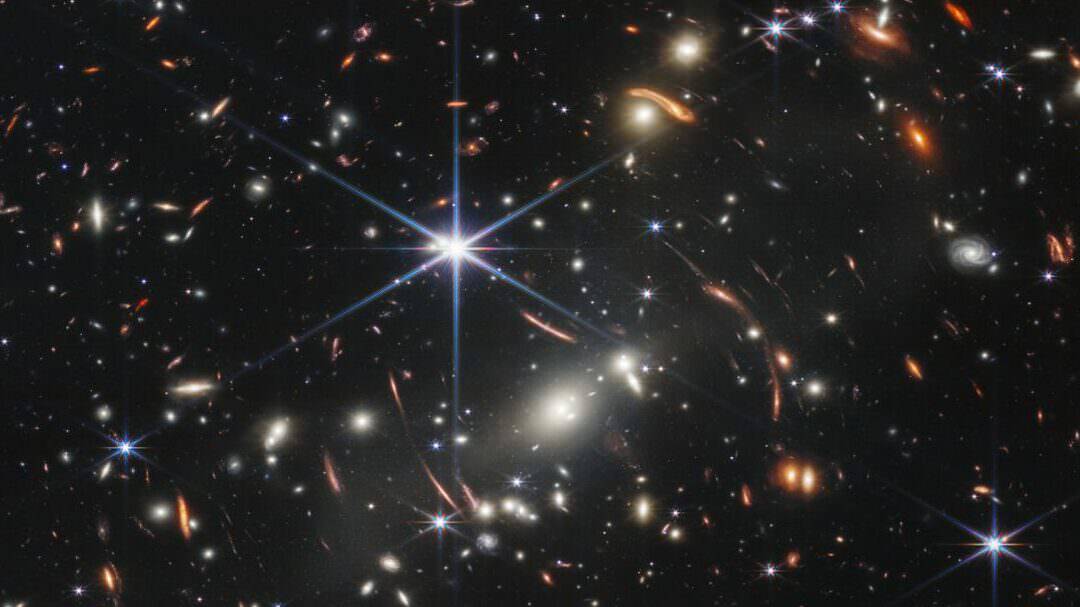As ancient humans lifted their heads and gazed up at the sky, they undoubtedly pondered the nature of the stationary “fireflies” that dotted the celestial expanse. By observing these lights, people began to associate certain natural phenomena, such as the changing of seasons, with celestial events, attributing magical properties to the latter. For instance, in ancient Egypt, the flooding of the Nile coincided with the appearance of the brilliant star Sirius (or Sotis, as it was called by the Egyptians). This led to the invention of the “Sotic” calendar year, which marked the interval between the two ascensions (or appearances) of Sirius in the sky. To facilitate organization, the year was divided into 12 months, each consisting of 30 days. The remaining 5 days (as the year contains 365 days, and 12 months of 30 days only adds up to 360) were designated as holidays.
The Babylonians achieved remarkable advancements in the field of astronomy, including astrology. They developed a unique mathematical system based on a 60-curve number system, which differed from our decimal system. This unconventional system was influenced by the Babylonians’ hypothetical possession of 60 fingers. As a result, astronomers faced a challenging task of working with a 60-curve representation of time and angular units. For instance, instead of the modern 100 minutes in an hour, the Babylonians measured time in 60 minutes. Similarly, they divided a degree into 60 minutes, unlike the contemporary 100-minute division. Furthermore, the Babylonians established the concept of a celestial sphere with 360 degrees, rather than the modern 1000 degrees. Additionally, they were responsible for defining the zodiac on the celestial sphere.
The celestial sphere is a fictional sphere of arbitrary size that is used to solve various astrometric problems by projecting the celestial luminaries onto it. Typically, the center of the celestial sphere is considered to be the observer’s eye. For an observer on Earth’s surface, the rotation of the celestial sphere accurately reflects the daily movement of the celestial luminaries in the sky.
The Babylonians were familiar with 7 “planets” – the Sun, Moon, Mercury, Venus, Mars, Jupiter, and Saturn. It was likely the Babylonians who first established the seven-day week, with each day dedicated to a specific celestial luminary. Additionally, the Babylonians developed the ability to predict eclipses, a skill that the priests cleverly utilized to enhance the common people’s belief in their supposed supernatural powers.
What is up in the sky?
Firstly, let us establish our “Universal Address” (applicable to Russians):
- country: Russia
- planet: Earth
- system: Solar
- galaxy: Milky Way
- group: Local group
- cluster: Virgo supergroup
- Metagalactics
- Our Universe
You and I reside on one of the eight expansive planets that orbit the Sun. The Sun, being a star, is a celestial body of significant size where thermonuclear reactions occur, resulting in a tremendous amount of energy.
A planet, on the other hand, is a spherical celestial body with enough mass to be shaped by gravity but does not undergo these same reactions. There are only eight major planets in total:
With the exception of Mercury and Venus, all planets have satellites, which are small “planets” that orbit around the larger planet. Earth, for instance, has its own satellite called the Moon, which is depicted in the first image and boasts a stunning surface.
Additionally, within the confines of the Solar System, we can find dwarf planets – diminutive celestial bodies with an almost spherical shape. These dwarf planets do not orbit a larger planet and lack the mass necessary to “clear” their path in the Solar System. Currently, there are five recognized dwarf planets, with one of them, Pluto, being considered a major planet for over seven decades:
Also present in the Solar System are asteroids, which are minute celestial bodies resembling planets in composition. They are primarily found in the main asteroid belt, situated between the planets Mars and Jupiter.
In addition to dwarf planets and asteroids, comets also exist. Known as “tail stars”, they were once seen as omens of misfortune by ancient civilizations. Comets are primarily composed of ice and possess a magnificent and sizable tail. One notable example is the Hale-Bopp comet, which graced the Earth’s skies in 1997 and was named after its discoverers, Hale and Bopp.
The Galaxy of Milk
However, our solar system is just one of countless planetary systems within the Milky Way (or the Milky Way) galaxy. A galaxy consists of numerous stars and other celestial bodies orbiting a common center of mass due to the force of gravity (as depicted in the accompanying computer model). In terms of scale, a galaxy is vastly larger than our Solar System, spanning approximately 100,000 light years. This means that it would take an ordinary beam of light, traveling at the fastest speed possible in the Universe, a hundred thousand years to traverse from one end of the Galaxy to the opposite end. The profound aspect is that when we gaze at the night sky and the stars, we are essentially peering into the distant past. This is because the light reaching us now originated long before the advent of humanity and even before the formation of Earth, emanating from an array of stars.

Astronomy is one of the oldest and most captivating sciences that allows humanity to explore the vastness of outer space.
– the substance that fills the entirety of space
Theoretical astronomy
Involves determining the mass and shape of stars, studying the laws that govern their movement due to gravitational forces.
Additionally, it entails developing analytical and computer models to understand celestial bodies and phenomena.
Moreover, it involves delving into the history of astronomy and unraveling the knowledge of ancient stargazers.
Furthermore, it encompasses the study of the location and movement of celestial objects.
Lastly, it explores the chemical and physical properties of objects in space.
The subject of astronomy encompasses all objects that can be seen with the naked eye or observed through instruments on observatories and spacecraft.
Throughout the course of history, humanity has strived to comprehend the essence of detectable entities and occurrences, to untangle the enigmas of the encompassing realm and ascertain its position within it.
Across all eras, the field of astronomy has exerted a profound impact on human practical endeavors, yet its utmost significance lies in shaping a scientific perspective. This can be discerned in the progression of distinct branches of astronomy, which have consistently been intertwined with other scientific disciplines.
Objective: The objective of this class is to provide an introduction to the science of astronomy and its connections with other sciences. We will also explore the history and development of astronomy, the instruments used for observations, and the unique features of astronomical observations. In addition, we will discuss the structure and scale of the Universe and examine how to solve problems related to the resolving power, magnification, and luminosity of a telescope. We will also delve into the profession of astronomer and its importance for the national economy, as well as the role of observatories in the field of astronomy.
Astronomy 11 _________ class
Theme 1 INTRODUCTION TO ASTRONOMY (1 h)
This class will cover the subject of astronomy, including its history of development and its significance and connections with other sciences. We will also explore the structure and scale of the Universe and discuss the importance of astronomy in shaping our worldview.
Goal: The aim is to provide an understanding of astronomy as a scientific discipline and its connections to other sciences. It also aims to introduce the history and evolution of astronomy, instruments used for observations, and the unique features of these observations. Additionally, it seeks to impart knowledge about the structure and scales of the Universe. The module will include problem-solving exercises to determine the resolving power, magnification, and luminosity of telescopes. Furthermore, it will highlight the significance of the astronomer profession in the national economy and discuss various observatories.
1. Educating: The goal is to familiarize students with the principles of astronomy as a scientific discipline and the primary areas of study within astronomy, including celestial objects, processes, and phenomena. Additionally, students will learn about the various methods used in astronomical research and the unique characteristics of each. The course will cover the history of astronomy and its interconnectedness with other scientific fields. Furthermore, students will explore the roles and significance of observation in the field of astronomy. Finally, the practical applications of astronomical knowledge and the tools used in astronomy will be discussed.
3. Developing: The development of cognitive interests in the subject is aimed at demonstrating that human thought always seeks to explore the unknown. It also aims to develop skills in analyzing information and creating classification schemes.
The general notebook contains 48 sheets and there are examinations available upon request.
Astronomy is a relatively new subject in the school curriculum, although you may have some familiarity with certain topics.
Instead of just reading a paragraph, it is important to actively work through it.
The goal is to delve into the essence of the subject and understand each phenomenon and process.
After reading a paragraph, make sure to complete all the questions and tasks, briefly summarizing your answers in your notebooks.
It is also important to test your knowledge by answering the list of questions provided at the end of each topic.
Feel free to look up additional material on the Internet to enhance your understanding.
(30 min) The lesson will begin with a video clip from a CD or a presentation.
Astronomy, derived from the Greek words astron (star) and nomos (law), encompasses the study of the Universe. It serves as the culmination of the natural-mathematical curriculum in schools. The field of astronomy delves into the movement of celestial bodies, known as celestial mechanics, as well as their inherent characteristics, explored in the realm of astrophysics. Additionally, astronomy investigates the origins and evolution of these celestial entities, an area known as cosmogony. In essence, astronomy is the scientific discipline that examines the structure, origins, and development of celestial bodies and their interconnected systems.
Astronomy holds a unique distinction among scientific fields as it boasts its own muse, Urania.
In the vast expanse of the Universe, all celestial bodies come together to form systems of varying complexity.
The Solar System consists of the Sun and various celestial bodies such as planets, comets, satellites of planets, and asteroids. The Sun is a self-luminous body, while other bodies like Earth reflect light. The Solar System is estimated to be around 5 billion years old. It is worth noting that there are numerous star systems with planets and other bodies in the vastness of the Universe.
The stars we see in the sky, including the Milky Way, represent only a small fraction of the stars that make up our Galaxy, also known as the Milky Way. The Galaxy is a complex system of stars, star clusters, and interstellar medium. It is important to mention that there are countless galaxies out there, and the light we see from the closest ones has been traveling to us for millions of years. Galaxies themselves are estimated to be 10-15 billion years old.
Galaxies come together to form various clusters.
All celestial bodies within the Universe are in constant motion, undergoing change and development. Planets, stars, and galaxies each have their own unique histories, often spanning billions of years.
One astronomical unit corresponds to 149.6 million kilometers, which is the average distance from the Earth to the Sun.
One parsec (pc) is equal to 206,265 astronomical units or 3.26 solar years.
A light year (sv. year) represents the distance that a beam of light, traveling at a speed of almost 300,000 km/s, covers in one year. To put it into perspective, one light year is equivalent to 9.46 trillion kilometers!
Stages in the development of astronomy
In the 1st stage, during Antiquity (BC), there was a progression from philosophy to astronomy, and elements of mathematics, particularly geometry, were incorporated.
II- Pre-telescopic period. (our era until 1610). The decline of science and astronomy occurred during this time due to various factors such as the collapse of the Roman Empire, barbarian raids, and the rise of Christianity. However, there was a rapid development of Arabian science that took place. Eventually, science saw a revival in Europe. During this period, the modern heliocentric system of the world structure was established. Several scientists made significant contributions to the development of astronomy, including Claudius Ptolemy (Claudius Ptolomeus) (87-165, Dr. Rome), Biruni, Abu Reihan Muhammad ibn Ahmed al-Biruni (973-1048, modern Rome), Mirza Muhammad ibn Shahrukh ibn Timur (Taragai) ULUGBEK (1394-1449, present-day Uzbekistan), Nikolai KOPERNIK (1473-1543, Poland), and Tycho (Tighe) BRAGE (1546-1601, Denmark).
Modern astronomy is a crucial field of study that relies heavily on NTP, incorporating various branches of mathematics and physics to investigate and explain celestial processes. It also encompasses the profession of an astronomer. (TABLE)
Astronomical observations.
Observations serve as the primary source of information about celestial bodies and the phenomena occurring in the Universe. Since it is impossible to physically interact with these bodies or conduct experiments on them (except through space exploration), observations play a vital role in studying them. They require long-term observations and the simultaneous study of interconnected objects, such as the evolution of stars.
The concept of the celestial sphere, which revolves around the Earth, emerged in ancient times due to the need to indicate the position of celestial bodies in space (coordinates), as all the luminaries appear distant from us.
For example, in Ancient Egypt, the observation of the star Sotis (Sirius) allowed them to determine the beginning of the Nile flood and establish the length of the year in 4240 BC as 365 days. However, in order to achieve accuracy in these observations, instruments were needed.
Through the study of astronomy, we have gained new knowledge and understanding. Astronomy is the scientific study of celestial objects, their motions, and their origins. It aims to explore and explain the universe beyond Earth.
The telescope is a fundamental tool in astronomy and it serves the purpose of observing and studying celestial objects. There are different types of telescopes, each with its own unique features and capabilities.
Overall, astronomy offers a fascinating exploration of the universe and allows us to expand our knowledge of the cosmos.
There is a need to demonstrate the utilization of the CD-“Red Shift 5.1”, the Observer’s Calendar, an exemplification of an astronomical magazine (electronic, like Nebosvod). Online, my website, Astrolinks Astrotop, and the Astronomy portal on Wikipedia can be used to obtain or locate information on the specific topic of interest. Evaluations.
Assignment: Introduction, §1; self-check questions and tasks
Astronomy, one of the most ancient and captivating fields of study, explores the various objects and phenomena found in the vast expanse of the Universe. In our initial lesson, we will delve into the definition of astronomy and its areas of focus. Additionally, we will acquaint ourselves with the prominent aspects of this scientific discipline. We will investigate the origins of astronomy and outline its key stages of advancement. Furthermore, we will discuss the intricate structure and immense scale of the universe.
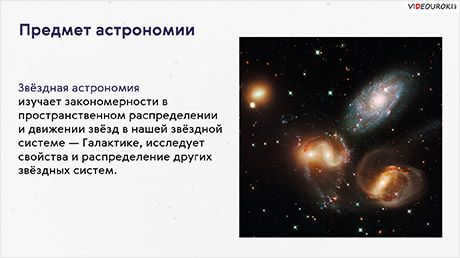
Currently, it is not possible to view or distribute the video lesson to students
In order to gain access to this and other video lessons in the package, you must add it to your personal account by purchasing it from the catalog.
Unlock amazing possibilities
Outline of the Lesson “The Field of Astronomy”
The study of objects and phenomena observed in the universe, astronomy, is an ancient and captivating science. Its roots can be traced back to the distant Stone Age, approximately between the sixth and third millennium BC.
Throughout the course of history, humans have been driven to comprehend the essence of the observed objects and phenomena, unveiling the enigmas of the cosmos and ascertaining our position within it.
Throughout history, humans have been fascinated by and documented the various celestial events that occur in the sky. What they discovered was that these observations correlated with changes in the world around them, such as the transition between day and night and the shifting of seasons. This knowledge was crucial for early civilizations as it helped them plan their agricultural activities and ensure they had enough food for the winter.
In essence, the systematic study of celestial movements was driven by the practical need to measure time. The predictable patterns of the Sun and Moon’s motion led to the establishment of fundamental units of time measurement, including the day, month, and year. This enabled people to accurately predict the arrival of different seasons throughout the year.
For instance, priests in Ancient Egypt had the ability to forecast the commencement of agricultural labor based on the sighting of the most brilliant star – Sirius – in the sky just before dawn, as it indicated the forthcoming spring floods of the Nile.
In ancient Arabia, the observation of the moon’s phases played a significant role, as the scorching heat necessitated most of the work to be conducted during the night.
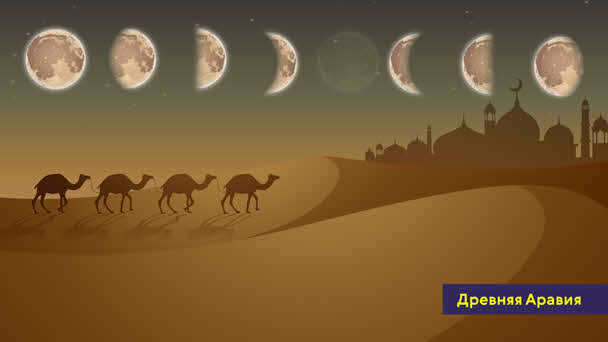
In countries with advanced navigation systems, there has been a strong emphasis on methods of stellar orientation.
Currently, numerous ancient stone structures have been discovered in various parts of the world that are aligned with astronomically significant directions. These directions often include the points of sunrise and sunset during the equinoxes and solstices. It is interesting to note that such structures can be found all around the globe. For instance, in Southern England, there is Stonehenge, while in the Southern Urals of Russia, there is Arkaim. These ancient observatories can date back as far as 5-6 thousand years.
Today, the field of astronomy is recognized as a core scientific discipline that investigates the arrangement, movement, genesis, and progression of celestial entities, their configurations, and the entirety of the Universe.
It is worth mentioning that astronomy stands out as one of the scarce branches of knowledge that was bestowed with its own muse, Urania.

And the unconventional, yet now customary, partitioning of the circle into 360 degrees also has roots in astronomy. This is because from the 3rd century B.C. until the mid-16th century (spanning almost 1,500 years), the prevailing cosmological model was the geocentric system proposed by Claudius Ptolemy. According to this model, the Earth was believed to be at the center of the universe, with all other celestial bodies, including the Sun, orbiting around it. Thus, it was thought that the Sun, in its daily revolution around the Earth, would move one degree at a time.
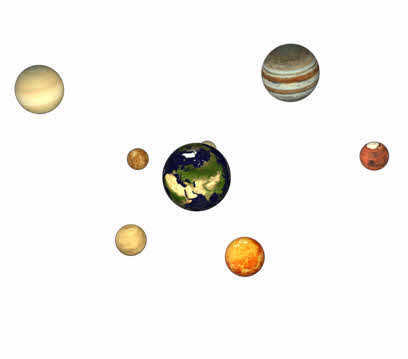
Astronomical observations have played a crucial role in aiding trade and navigation, enabling individuals to navigate unfamiliar territories and oceans, while also helping them determine precise time measurements. These practical applications have greatly benefitted from the advancements in astronomy.
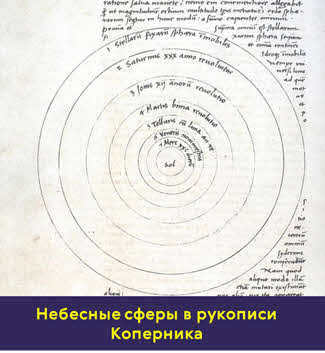
Astronomical observations of the motion of celestial bodies and the necessity to predict their positions played a vital role in the advancement of not just mathematics, but also mechanics, a branch of physics that is highly significant for practical human endeavors. Astronomy, mathematics, and physics, which all originated from the field of philosophy, have always maintained a strong interconnectedness. It is therefore not coincidental that renowned scientists like Galileo Galilei and Isaac Newton are celebrated for their contributions not only to physics, but also to mathematics and astronomy.
Furthermore, Galileo Galilei, who constructed the first rudimentary telescope, provided unquestionable evidence in support of Copernicus’ heliocentric theory through his observations and calculations.
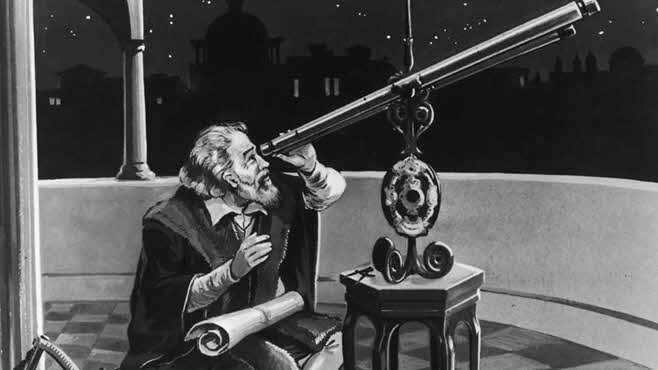
At the close of the 17th century, Newton established his renowned law of universal gravitation, which opened up the realm of employing mathematical techniques to investigate the movement of planets and other entities within our solar system.
Furthermore, the celebrated astronomer Johannes Kepler, while examining the path of Mars and other celestial bodies, succeeded in formulating three laws of planetary motion that played a pivotal role in advancing our understanding of the structure of the solar system.
The branch of astronomy dedicated to examining the movement of celestial bodies was dubbed celestial mechanics. This discipline not only enabled the explanation of various phenomena, but also facilitated highly precise calculations of nearly all observed motions within the solar system and the Galaxy, thereby propelling astronomy to the forefront of scientific inquiry during this era.
As time went on, astronomers started using more advanced telescopes for their observations. Galileo’s basic telescope was enhanced by Kepler and later by Huygens. In 1655, Huygens not only observed the rings of Saturn, but also made the groundbreaking discovery of its moon Titan.
In 1761, the renowned Russian scientist Mikhail Vasilyevich Lomonosov made the remarkable discovery of Venus’ atmosphere and conducted extensive research on comets.
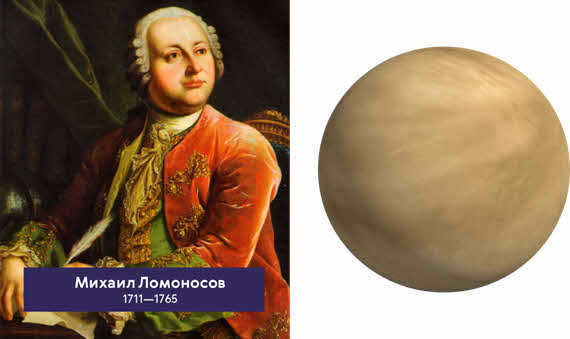
The field of comparative planetology emerged when scientists compared other planets and satellites to Earth as a point of reference.
Around the same time (between 1837-1839), scientists in Russia, Germany, and England independently gathered the first data on determining distances to stars, marking the beginning of stellar astronomy. This branch of study focuses on the spatial distribution and motion of stars within our galaxy, as well as the properties and distribution of other star systems.
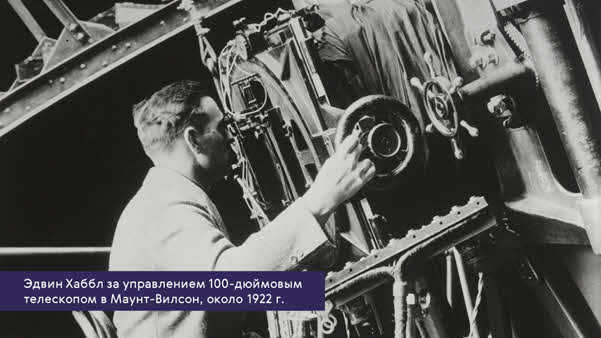
Throughout history, astronomy has always had a significant impact on human activities, particularly in shaping our scientific worldview. This influence can be observed by examining the progress of different branches of astronomy, which have always been closely intertwined with other scientific disciplines. For instance, the invention of atomic clocks, known for their remarkable precision of 10^-15 seconds, has enabled researchers to study annual and long-term changes in the Earth’s rotation, thus facilitating adjustments to our timekeeping standards.
The advancement of rocket technology has allowed humanity to venture into outer space, opening up new frontiers for the study of celestial objects beyond our planet. This breakthrough has sparked a renewed interest in celestial mechanics and has paved the way for calculating the orbital paths of both unmanned and manned spacecraft for various purposes.
Studying the atmospheres of celestial bodies in the solar system aids in gaining a deeper comprehension of the principles governing Earth’s atmosphere dynamics, enabling the construction of a more precise model and, consequently, enhancing weather forecasting accuracy.
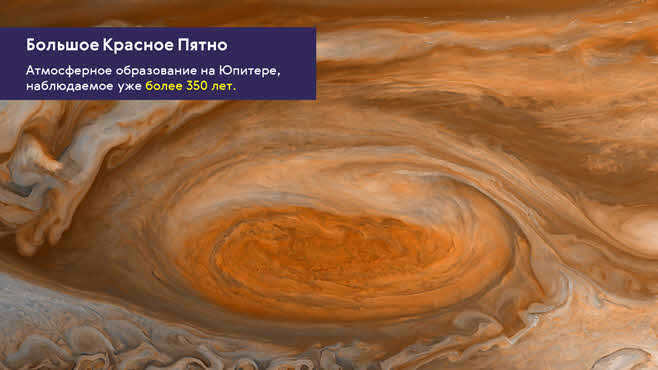
Astrophysics’ present-day advancements are driving the progress of cutting-edge technologies. One such advancement is the exploration of the energy sources of the Sun and other stars, which has inspired the concept of controlled thermonuclear reactors. Additionally, studying solar prominences has sparked the idea of using a magnetic field for thermal insulation of superhot plasma and the development of magnetohydrodynamic generators.
It is evident that the scientific advancements of the past few decades have demonstrated the undeniable connection between astronomy and physics, enabling us to effectively address numerous pressing issues. Consequently, it is no coincidence that in the early years of the twenty-first century, three Nobel Prizes in Physics were bestowed upon researchers for their contributions to astrophysics and cosmology.
However, the Universe is not limited to just our own galaxy. There are countless other star systems out there. It takes over 13 billion years for light from the farthest known galaxies to reach Earth.
As humanity enters the era of space exploration and prepares for interplanetary travel, it is crucial not to forget about our home planet. Earth is a truly unique place where human civilization has flourished. And if the Earth’s nature is exceptional, then the responsibility of its preservation falls heavily on our shoulders.
The history of astronomy dates back to ancient times, making it one of the oldest sciences. Astronomical knowledge has proven invaluable for navigation and orienteering in the natural world.
Astronomy versus Astrology
Throughout the ages, from the Middle Ages to Ancient Egypt in the 4th millennium B.C., the study of the stars has captivated mankind. Egyptian priests and ancient Chinese astronomers, as early as the II millennium BC, were able to accurately predict lunar and solar eclipses. Subsequently, significant advancements in the realm of astronomy were achieved in ancient Greece.
In the beginning, astronomers had the goal of describing the movement of celestial bodies in the sky as their main purpose. These included the Sun, Moon, stars, and planets. During ancient times, astronomy was divided into two branches. One of them, astrology, focused on exploring the influence of astronomy on human life. The other branch focused on developing theoretical mathematical models that could accurately describe the motion of celestial bodies and predict their future positions.
A calendar dividing the year into 365 days was created around 3000 BC using astronomical knowledge. During that time in the Interfluvial region of the Sumerian civilization, the constellations were named. Babylonian astronomical texts, some of which date back to the XVIII-XVII centuries BC, have survived to this day. In the 5th century BC, Babylonian astronomers introduced the zodiac signs. As early as the 6th century BC, Ancient Greece achieved significant advancements in astronomy. Greek astronomers were able to utilize geometric methods to describe the movement of celestial bodies.
Cosmological Systems in Ancient Times and the Middle Ages
The earliest known Greek astronomers were Anaximander and Pythagoras. Pythagoras is credited with being the first to propose that the Earth is spherical in shape. Plato, who lived between the fifth and fourth centuries BC, put forth the idea that celestial bodies move in a uniform and circular manner.
One of the most significant accomplishments of Plato was his establishment of a scientific institution and the mentoring of talented students. Among them was Eudoxus of Knidos. They devised a theory of the cosmos, in which it consisted of a series of spheres orbiting around the Earth. Within this framework, they positioned the Earth at the center of the universe. This theory was further refined by Callips of Kizik, Ptolemy, and Aristotle, who expanded the number of spheres to 55. Eventually, it became known as the Ptolemaic system and remained unchallenged for much of the Middle Ages. However, in antiquity, Apolonius Pergus (3rd century BC) and Hipparchus (2nd century BC) were the first to propose models in which the Earth revolves around the Sun.
In the early Middle Ages, Islamic countries emerged as the hub of scientific advancements, including the field of astronomy. Arab astronomers built upon the progress made by their Greek and Roman predecessors.
Astronomy’s Renaissance: A Paradigm Shift
During the Renaissance and the Great Discovery, astronomy, alongside other scientific disciplines, experienced a rapid expansion in Europe. The Arabs played a vital role in reintroducing the knowledge of ancient Western European astronomers. The Great Discovery prompted a revolutionary change in astronomy, driven by the need for more accurate celestial navigation methods for oceanic trade routes. This transformative phase witnessed the replacement of Ptolemy’s celestial sphere model with Copernicus’ heliocentric system.
Advancements in Astronomy in the Modern and Contemporary Era
In 1687, Sir Isaac Newton, an English physicist, introduced the law of universal gravitation, a groundbreaking discovery that had a profound impact on the understanding of the cosmos. This pivotal moment in history revolutionized astronomical theories and opened up new possibilities for studying the celestial bodies. However, it wasn’t until the mid-19th century that a significant breakthrough in astronomy occurred.
During this time period, astronomers were able to utilize the technique of spectral analysis and photography, which revolutionized the field by expanding the boundaries of space that could be observed and studied. As a result, a new scientific discipline known as astrophysics emerged, combining the principles of physics and astronomy.
Further advancements in the 1940s led to the development of radio astronomy, which allowed scientists to observe and study celestial objects using radio waves. This breakthrough provided valuable insights into the universe and expanded our understanding of its vastness.
In 1957, X-ray astronomy was born, enabling astronomers to study cosmic phenomena that emit X-rays. This new branch of astronomy has provided us with valuable information about high-energy objects in the universe, such as black holes and neutron stars.
Significant advancements in astronomy have been made through the exploration of outer space. Notable milestones include the launch of the first artificial satellite in 1957 and the first manned flight in Earth orbit in 1961, both accomplished by the USSR. Additionally, the U.S. space agency NASA made history with the successful landing of a man on the Moon in 1969.
Currently, astronomers have access to an abundance of research material thanks to powerful telescopes positioned in space. One of the most recent major achievements in the field is the examination of planets in distant star systems, potentially capable of supporting life.
Don’t miss out on the opportunity to participate! Register between March 15-17, 2022, and receive a certificate and discounted tuition.


Breakdown of the presentation by individual slides:


The progression of astronomy throughout history

The development of astronomy can be divided into five stages: the first stage is the Antique World (BC), followed by the second stage, which is the Pre-Telescopic era (our era until 1610). The third stage is the Telescopic era (1610-1814), followed by the fourth stage, which is the Spectroscopy era (1814-1900). Finally, we have the fifth stage, which is the Modern era (1900-present).
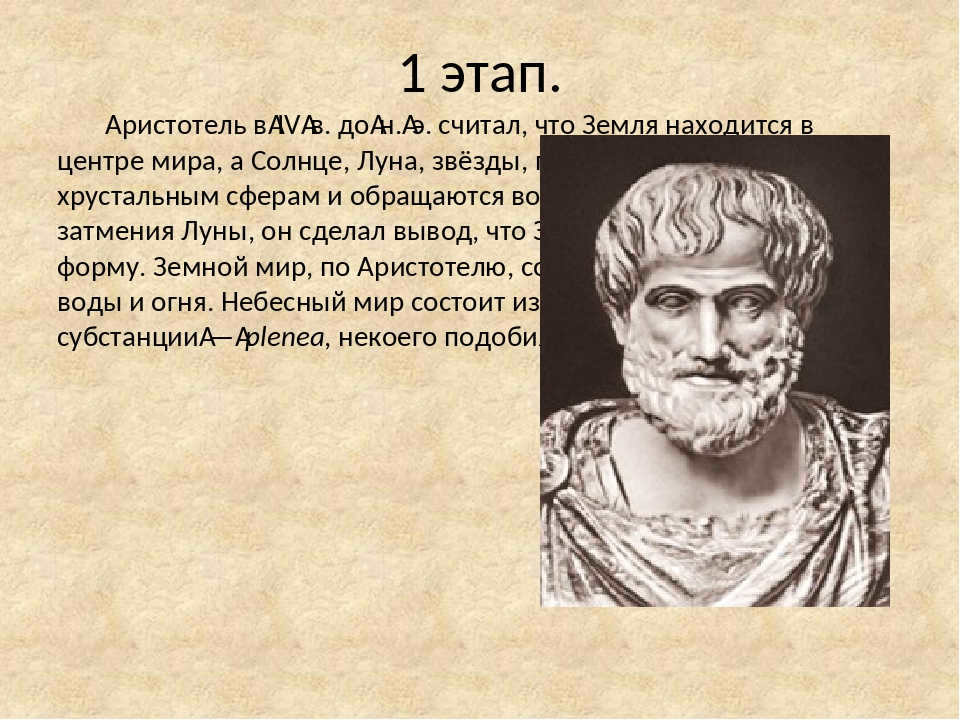
During Stage 1, in the 4th century B.C., Aristotle held the belief that the Earth occupied a central position in the universe. He proposed that the Sun, Moon, and stars were affixed to transparent crystal spheres that revolved around the Earth. By studying lunar eclipses, Aristotle deduced that the Earth possessed a spherical shape. According to his understanding, the earthly domain consisted of earth, air, water, and fire. The celestial realm, on the other hand, was composed of a distinct substance known as plenea, which bore a resemblance to ether.


Stage 1. In the 2nd century AD, Alexandrian astronomer Ptolemy developed a geocentric system of the world based on the concepts of Aristotle and other scientists. According to Ptolemy’s theory, there are 55 celestial spheres. However, the geocentric system of the world was unable to explain the movement of the planets and several other observed phenomena.

During Stage 2, Giordano Bruno introduced several new concepts to Copernicus’ teachings. Bruno proposed that there are numerous systems similar to our solar system within the Universe. He believed that planets revolve around stars, which are born and eventually die, suggesting that life in the universe is infinite. As a result of his ideas, Bruno was declared a heretic and went into hiding for several years. Eventually, the Inquisition lured him back to Italy, where he was demanded to renounce his beliefs. However, Bruno remained steadfast in his convictions and was ultimately executed in Rome on February 17, 1600. Surprisingly, this execution did not quell the spread of Bruno’s ideas, but instead ignited a tremendous public interest in them.
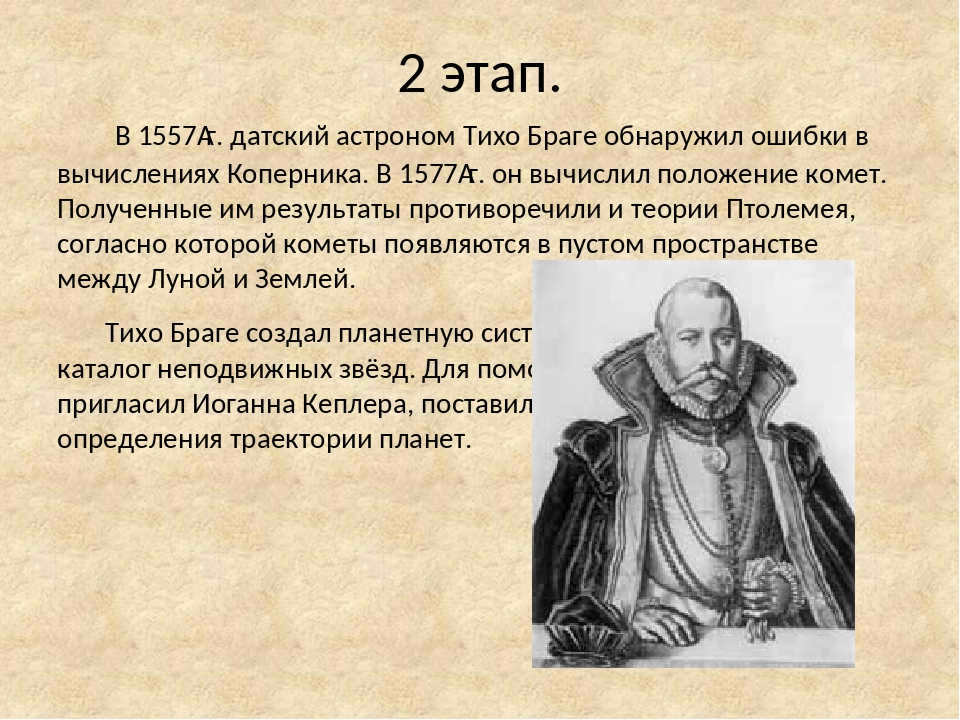

During the year 1557, the Danish astronomer Tycho Brahe made a significant breakthrough in the field of astronomy by uncovering errors in the calculations made by Copernicus. This discovery was a major turning point in the study of celestial bodies and their movements. In the year 1577, Tycho Brahe took on the task of calculating the positions of comets. His findings challenged the prevailing theory proposed by Ptolemy, which stated that comets appear in the empty space between the Moon and the Earth. Tycho Brahe’s revolutionary work led to the creation of a new planetary system and the compilation of a vast catalog of fixed stars. To further assist in the calculations, Tycho Brahe enlisted the help of Johannes Kepler and assigned him the important task of determining the trajectories of the planets.


Stage 3. Following the demise of Tycho Brahe, Johannes Kepler proceeded with the task of studying the extensive amount of observational data that Brahe had bequeathed to him. In 1619, he published a paper in which he formulated the three famous laws (Kepler’s laws).
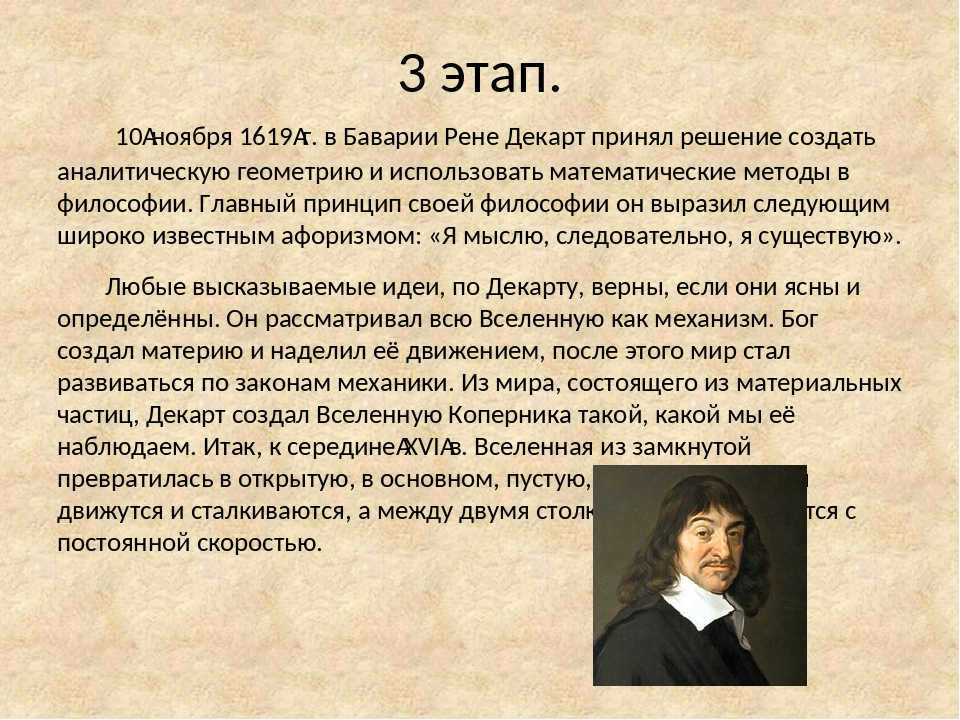

Stage 3. The heliocentric system reached its ultimate victory following the revelation of I. Newton’s law of universal gravitation. Utilizing this law, it became feasible to deduce Kepler’s laws and provide a precise depiction of the movement of celestial entities.
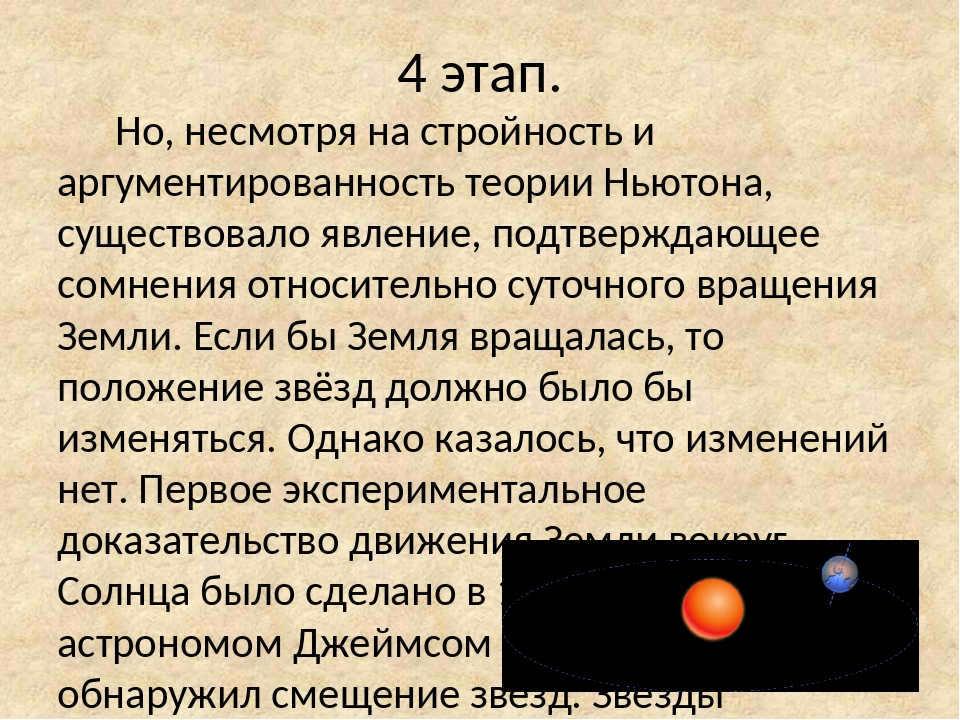

A concise explanation of the document:
Astronomy, derived from the Greek words “astron” meaning star and “nomos” meaning law, is the field of study that focuses on the structure, origin, and development of celestial bodies and their systems.
Astronomy is an ancient and captivating discipline that has been driven by the practical needs of humanity:
- To measure and keep track of time, such as creating calendars.
- To navigate using the stars, particularly for sailors.
- To satisfy the curiosity of understanding natural phenomena and harnessing them for practical purposes.
- To explore the connection between celestial events and human destiny, leading to the development of astrology.
Astronomy is one of the oldest sciences, with its roots dating back to the Stone Age (VI-III millennia BC).
Astronomy is a scientific field that examines the movement, structure, origins, and evolution of celestial bodies and their systems..
Astronomy [Greek. astron (astron) – star, nomos (nomos) – law] – a discipline that investigates the movement of celestial bodies (in the field of “celestial mechanics”), their properties (in the field of “astrophysics”), origins, and evolution (in the field of “cosmogony”)
Astronomy, one of the oldest and most captivating branches of natural science, delves into not only the present but also the ancient history of the vast cosmos that envelops us. It enables us to construct a scientific framework of the universe’s future. Since the dawn of civilization, humans have been intrigued by the organization of the world and their place within it. In the early stages of human development, various cultures crafted cosmological myths that explained the gradual emergence of order from the initial chaos, giving rise to everything that encompasses humanity: the celestial realm, the terrestrial domain, mountains, seas, rivers, flora, fauna, and even mankind itself. Throughout the centuries, a wealth of knowledge has been amassed regarding celestial phenomena.
It was discovered that changes in the Earth’s natural cycles are accompanied by changes in the appearance of the night sky and the observable movement of the Sun. In order to effectively plan and carry out agricultural tasks such as planting, watering, and harvesting, it became necessary to calculate the arrival of specific times of the year. This could only be achieved through the use of a calendar that was created through long-term observations of the Sun and the Moon’s positions and movements. Therefore, the practice of regularly observing celestial bodies arose out of the practical need to measure time. The consistent periodicity inherent in the movements of celestial bodies forms the foundation of the fundamental units of time measurement that are still in use today – the day, the month, and the year.
Ancient Greece witnessed a shift from simple contemplation and naive interpretations of natural phenomena to scientific explanations. This shift marked the beginning of the rapid development of philosophy as a science of nature and the integration of astronomical knowledge into human culture. Astronomy, being the only science with its own patron muse, Urania, played a crucial role in this development.
The importance of astronomical knowledge can be understood by considering its practical applications. These applications can be categorized into several groups:
- The requirement to expand trade involves maritime trade, such as seafaring, exploration of trade routes, and navigation. Consequently, Phoenician navigators used the Polar Star as their orientation, known as the Phoenician Star by the Greeks;
- Aesthetic and cognitive necessities, as well as the necessity for a comprehensive worldview, prompted individuals to seek explanations for the periodicity of natural phenomena and the formation of the surrounding world.
The concept of astrology played a significant role in the mythological worldview of ancient civilizations, giving rise to the origin of astronomy.
Stages of astronomy development:
1st Ancient World (B.C.). Philosophy → astronomy → elements of mathematics (geometry). Ancient Egypt, Ancient Assyria, Ancient Maya, Ancient China, Sumerians, Babylonia, Ancient Greece.
According to archaeological findings, it has been determined that humans had basic knowledge of astronomy as early as 20,000 years ago during the Stone Age.
The poems of Homer and Hesiod provide insight into the astronomical knowledge possessed by the Greeks during this time period. They make mention of various stars and constellations, and offer practical advice on how to navigate using celestial bodies and determine the seasons of the year. The cosmological ideas of this era were heavily influenced by mythology: the Earth was believed to be flat, with the firmament depicted as a solid bowl resting upon it. During this time, philosophers emerged as the main figures, intuitively discovering what would later be recognized as the scientific method of understanding. Concurrently, the first dedicated astronomical observations were conducted, leading to the development of calendar theory and practice. Geometry was also first employed as the foundation of astronomy, introducing a range of abstract concepts in mathematical astronomy. Additionally, efforts were made to identify physical regularities in the motion of celestial bodies. Many astronomical phenomena were scientifically explained, and the spherical shape of the Earth was proven.
The second pre-telescopic period, also known as our era up to 1610, was marked by a decline in science and astronomy. This was due to various factors such as the collapse of the Roman Empire, barbarian raids, and the rise of Christianity. However, there was a rapid development of Arabian science during this time. Eventually, science began to revive in Europe, leading to the establishment of the modern heliocentric system of the world structure.
Notable scientists who made significant contributions to astronomy during this period include Claudius Ptolemy (Claudius Ptolomeus) from Rome (87-165, Dr. Ptolomeus), BIRUNI (Abu Reyhan Mohammed ibn Ahmed al-Biruni) from present-day Uzbekistan (973-1048), Mirza Mohammed ibn Shahrukh ibn Timur (Taragai) Ulugbek from present-day Uzbekistan (1394-1449), Nicholas KOPERNIK from Poland (1473-1543), and Tycho (Tighe) BRAGE from Denmark (1546-1601).
- In the early 17th century (Lippersguy, Galileo, 1608), an optical telescope was invented, which greatly expanded humanity’s understanding of the world.
- In 1671, the parallax of the Sun was measured, allowing for the accurate determination of the astronomical unit and the speed of light.
- The subtle movements of Earth’s axis, the proper motions of stars, and the laws of motion of the Moon were discovered.
- Between 1609-1618, Kepler, based on observations of the planet Mars, formulated the three laws of planetary motion.
- In 1687, Newton published the law of universal gravitation, providing an explanation for planetary motion.
- Celestial mechanics was established.
- The masses of the planets were determined.
- At the start of the 19th century (January 1, 1801), Ceres, the first small planet (asteroid), was discovered by Piazzi;
- Pallada and Juno were discovered in 1802 and 1804.
IVth Spectroscopy and photography. (1814-1900). Spectroscopic observations. First determinations of distances to the stars. Discovery of the planet Neptune.
- In 1806 – 1817, I.Fraunthofer (Germany) laid the foundation of spectral analysis, measuring the wavelengths of the solar spectrum and absorption lines, thus establishing the fundamentals of astrophysics.
- In 1845, I. Fizeau and J. Foucault (France) captured the first photographs of the Sun.
- In 1845 – 1850, Lord Ross (Ireland) uncovered the spiral structure of certain nebulae.
- The discovery of the planet Neptune in 1846 by I.Halle from Germany, based on the calculations of W.Leverrier from France, was a remarkable achievement in celestial mechanics.
- The utilization of photography in the field of astronomy opened up new possibilities, enabling the capture of images of the solar corona, the Moon’s surface, and facilitating the study of star, nebula, and planet spectra.
- Advancements in optics and telescope construction allowed for the identification of Mars’ satellites and the detailed observation of its surface during opposition, as observed by D. Schiaparelli.
- The improved precision of astrometric observations led to the measurement of annual parallax in stars (Struve, Bessel, 1838) and the discovery of Earth’s pole movement.
The V-th Modern period (1900-present) witnessed significant advancements in astronomy, particularly in the use of photography and spectroscopic observations. These technological innovations allowed scientists to delve deeper into the mysteries of the universe and tackle questions regarding the source of energy for stars. Furthermore, this era marked the discovery of galaxies and the emergence of radio astronomy. Additionally, space research played a pivotal role during this time.
In the II century, the Greek scientist Ptolemy made an attempt to substantiate the geocentric system of the world during the Hellenistic Egypt.
Between 1515 and 1543, N. Copernicus, a Polish scientist, provided justification for the heliocentric system of the world.
From 1609 to 1619, Austrian astronomer I. Kepler made significant contributions to the field by discovering the laws of planetary motion.
During the years 1609 to 1633, Galileo, an Italian scientist, made groundbreaking observations using the telescope. His discoveries included sunspots, the phases of Venus, mountains on the Moon, satellites of Jupiter, and the star structure of the Milky Way.
1672. J. Cassini (France) made the first reasonably accurate determination of the Earth’s distance from the Sun.
1687. I. Newton (England) published the Law of Universal Gravitation.
1718. Halley (England) discovered the motion of stars in space.
1725. The observatory of the Academy of Sciences was founded in St. Petersburg.
1755. I. Kant (Germany) published the first scientific hypothesis about the origin of celestial bodies.
1761. M. V. Lomonosov (Russia) discovered the atmosphere of the planet Venus.
1781. Herschel (England) discovered the planet Uranus.
1801. G. Piazzi (Italy) discovered the first minor planet Ceres.
1836. V. Y. Struve (Russia) made the first measurement of the distance to the stars.
1839. The Pulkovo Observatory opened in Russia.
1846. I. Halle (Germany) discovered the planet Neptune, as calculated by Leverrier (France).
1859. The application of spectral analysis in astronomy began.
1868. Jansen (France) and Lockyer (England) discovered a method of observing the solar atmosphere and prominences outside eclipses.
1877-1904. F. A. Bredikhin (Russia) developed the theory of comets.
1908. G. Livitt (USA) discovered the relationship between the period of change in the brilliance of variable stars – cepheids and their true luminous intensity.
1924. E. Hubble (USA) discovered the existence of other stellar systems similar to our Galaxy.
1927. J. Sort (Holland) discovered the rotation of our star system, the Galaxy.
1927. G. A. Shain (USSR) and O. L. Struve (USA) discovered the rotation of stars.
Astronomy, the study of the Universe, focuses on examining the positioning, movement, structure, origin, and growth of celestial bodies and the systems they form.
The field of astronomy encompasses the examination of the Sun, stars, planets, satellites, comets, meteors, nebulae, star systems, and the matter that fills the space between stars and planets.
- One aspect of astronomy involves analyzing the apparent and actual positions and movements of celestial bodies in space and determining their size and shape.
- Another aspect involves investigating the structure of celestial bodies and exploring the chemical composition and physical properties of the matter within them.
- Lastly, astronomy tackles the challenge of understanding the origin and development of individual celestial bodies and the systems they form.
Overall, astronomy can be divided into three primary sections:
Astrometry is the field of study that focuses on the position and movement of celestial bodies as well as the Earth. Its main objectives are:
- Establishing a coordinate system for celestial bodies;
- Determining the parameters that fully describe the patterns of motion of celestial bodies and the Earth’s rotation.
Celestial mechanics, on the other hand, examines the motion of celestial bodies under the influence of gravity. It develops techniques for determining their orbits, calculates future coordinates (ephemerides), and explores the motion and stability of natural and artificial celestial systems.
The branch of celestial mechanics that deals with orbit determination and ephemeris calculation is known as theoretical astronomy.
The primary stages of astronomy’s evolution.
The first stage occurred around 3 thousand years B.C. in Egypt, where astronomers accurately determined the duration of the tropical year through observations of Sirius’s appearance.
China experienced the second stage around 2 thousand years B.C., during which astronomers extensively studied the apparent movements of the Sun and Moon, enabling them to predict solar and lunar eclipses.
In the 2nd century B.C., Hipparchus (also known as Dr. Hipparchus) from Greece, specifically Rhodes, compiled the first star catalog and developed the geometrical theory of epicycles, which formed the foundation of the geocentric model of the universe.
During the Middle Ages, astronomy predominantly flourished in Central Asia.
Galileo Galilei (1564 – 1642) played a significant role in the fourth stage of astronomy’s development. He was among the first to utilize a telescope for astronomical purposes in 1609 and discovered four of Jupiter’s satellites in 1610.
Isaac Newton, born in 1643 and died in 1727, is credited with establishing the fundamental laws of mechanics and the law of universal gravitation.
In the 17th to the 19th centuries, significant discoveries were made in the field of astronomy, including the identification of new planets, satellites, and asteroids.
During the mid-19th century and beyond, advancements in spectral analysis and photography, specifically in the visible range, greatly enhanced astronomical research.
The 20th century saw major developments in astrophysics, including the theory of gravitation and the field of general relativity.
Starting from the 1940s, radio astronomy emerged as a new field of study within astronomy.
In 1957, the first artificial satellite was launched into space.
In 1961, Yuri Gagarin became the first human to travel to space.
In 1969, the historic moon landing took place, with humans setting foot on the lunar surface.
From the 1970s to the 1990s, there was a focus on exploring Mars, Venus, and other distant planets.
The 1990s and 2000s witnessed the launch and success of the Marshall Space Telescope and the Hubble Space Telescope, as well as the discovery of planets orbiting other stars.
Astronomy plays a crucial role in the field of natural sciences.
It encompasses a wide range of subjects and tasks, with various sections dedicated to different aspects of astronomical research.
Both classical and modern methods are employed in the pursuit of advancing our understanding of the universe.
Subject and tasks of astronomy
Astronomy is the scientific study of the universe, which involves examining the location, motion, structure, origin, and development of celestial bodies and the systems they form.
Astronomy explores the Sun, stars, planets, satellites, comets, meteors, nebulae, star systems, and the matter that fills the space between stars and planets.
- The study involves determining the apparent and then the actual positions and movements of celestial bodies in space, as well as measuring their size and shape.
- Another aspect is investigating the structure of celestial bodies and studying the chemical composition and physical properties of the matter within them.
- Additionally, astronomy seeks to solve the problem of how individual celestial bodies and the systems they form originated and developed.
Within the field of astronomy, three main sections are commonly recognized:
Astrometry involves the study of the position and movement of celestial objects as well as the Earth. Its main objectives include establishing a celestial coordinate system and determining the key parameters that describe the regularities of celestial body motion and Earth rotation.
- Celestial mechanics focuses on the motion of celestial bodies under the influence of gravity, developing techniques for determining their orbits, and enabling the calculation of future coordinates (ephemerides). It also examines the motion and stability of both natural and artificial celestial systems.
The branch of celestial mechanics that deals with orbit determination and ephemeris calculation is known as theoretical astronomy.
Astrophysics investigates the origins, structure, chemical composition, physical characteristics, and evolution of both individual celestial bodies and their systems, encompassing the entire Universe.
The key milestones in the progression of astronomy.
The primary milestones in the advancement of astronomy date back to 3000 years BC in Egypt, where the precise length of the tropical year was determined through the observation of Sirius.
In China, around 2000 years BC, extensive studies of the apparent movements of the Sun and Moon were conducted, enabling the prediction of solar and lunar eclipses.
In the 2nd century BC, Hipparchus from ancient Greece, specifically Rhodes, compiled the first star catalog and formulated the geometric theory of epicycles, which provided the foundation for the geocentric model of the universe.
During the Middle Ages, astronomy experienced significant development, particularly in Central Asia.
Galileo Galilei (1564 – 1642) was among the pioneers in utilizing a telescope for astronomical purposes (1609) and made the groundbreaking discovery of four satellites orbiting Jupiter (1610).
Isaac Newton (1643 – 1727) established the fundamental principles of mechanics, including the law of universal gravitation.
During the period from the 17th to the 19th centuries, numerous new planets, satellites, and asteroids were discovered.
In the mid-19th century and beyond, the field of astronomy witnessed significant advancements such as spectral analysis and photography in the visible range.
In the 20th century, the study of astrophysics, general relativity, and the theory of gravitation gained momentum.
Since the 1940s, radio astronomy has played a crucial role in expanding our understanding of the universe.
In 1957, the first artificial satellite was launched into space.
In 1961, the first human embarked on a journey to space.
In 1969, humans successfully landed on the Moon, marking a monumental achievement.
From the 1970s to the 1990s, explorations of Mars, Venus, and other distant planets were carried out.
In the 1990s and 2000s, the Hubble Space Telescope revolutionized our view of the cosmos and made significant discoveries, including the detection of exoplanets.
Astronomy, the study of the movement and characteristics of objects in the sky, is one of the earliest scientific disciplines. In its early stages, it was closely connected to astrology, but over time, scientific astronomy and astrology became distinct fields. Other branches of study, such as astrophysics and cosmology, which explore celestial objects beyond Earth, were previously considered part of astronomy but later developed into separate sciences in the 20th century.
The time of antiquity
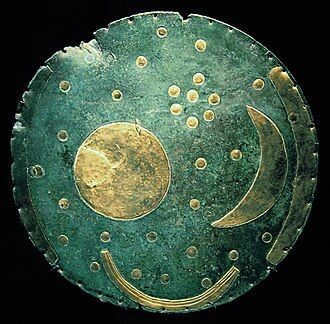
Astronomy as a scientific discipline has been present in human culture for thousands of years, with evidence of its existence dating back to the 6th to 4th millennium BC [1] [2] [3] [4]. The earliest mentions of celestial bodies can be found in the “Pyramid Texts” from the XXV-XXIII centuries BC, which served as religious texts [5]. Additionally, certain megalithic structures and primitive rock paintings have been interpreted as having astronomical significance. These celestial themes can also be found in folklore [6].
Throughout history, people have observed and documented periodic changes in the sky, demonstrating a long-standing fascination with the celestial realm.
The units of time measurement, such as day, month, and year, emerged as a result of these stable cycles. While the arrangement of stars may seem unchanging, it has been observed that certain luminaries, known as planets, are exceptions to this rule. By observing the changes in the celestial sphere, people noticed a correlation with the changing seasons on Earth [4] [7]. This led to the belief that celestial movements are connected to other earthly phenomena and can influence the course of history or predict important events, such as the birth of kings, wars, famines, epidemics, and more. The trust in astrological fantasies played a significant role in the advancement of scientific astronomy, as it helped justify the practical benefits of studying the sky to the authorities. Due to these reasons, ancient astronomers placed special emphasis on rare and non-periodic phenomena like eclipses, the appearance of comets, and the fall of meteorites.
Sumer and Babylon
The Babylonian empire, which was part of the larger Sumero-Akkadian state, thrived from the 2nd millennium BC to the 6th century BC. During its final decades, it was governed by the Chaldeans, and in the 6th century BC, it fell under the rule of Persia.
The Babylonian priests were known for their contributions to astronomy. They created numerous astronomical tables and were responsible for identifying the main constellations and the zodiac. Additionally, they introduced the concept of dividing a full angle into 360 degrees and made advancements in trigonometry.
![365\frac <1></p>
The Sumerians created the lunar calendar [8] during the 2nd millennium B.C., and it was improved upon in the 1st millennium B.C.. This calendar consisted of 12 synodic months, with six months of 29 days and six months of 30 days, adding up to a total of 354 days [9]. Initially, they would add a 13th month to account for the solar year (which they determined to be](https://dic.academic.ru/dic.nsf/ruwiki/84dc4141d0a5643da7747fe8a20d0428.png) days), but later stopped doing so [9].
days), but later stopped doing so [9].
Through their observations and calculations, the priests of Sumer discovered many laws of planetary and lunar motion, as well as the ability to predict eclipses [9]. By 450 BC, the Babylonians were already familiar with the “metonic cycle,” which accurately matched 235 months with 19 solar years [9]. However, the Chinese had discovered this cycle even earlier.
It is likely that the seven-day week originated in Babylon, where each day was associated with one of the seven celestial bodies.
Ancient Egypt
The flooding of the Nile occurs in early summer, coinciding with the first appearance of the brightest star in the sky – Sirius, known as “Sotis” in Egyptian. Prior to this moment, Sirius is not visible. This may explain the use of the “Sotic” calendar in Egypt, alongside the civil calendar. The Sotic year is the time between two heliacal risings of Sirius, which aligns with the sideric year. The civil year, on the other hand, consists of 12 months, each with 30 days, and an additional five days, resulting in a total of 365 days [7].
In the beginning, there were no weeks. Instead, the month was divided into three decades. Egypt used a lunar calendar that was coordinated with the civil calendar and followed the metonic cycle. However, under the influence of Babylon, the concept of a seven-day week was introduced. The days were divided into 24 hours, which were initially unequal, separating the light and dark times of the day. However, by the end of the 4th century BC, the hours took on their modern form.
In contrast to Babylon, Egypt used a decimal system. However, they also allocated an additional hour for transitional periods in the day, resulting in 12 light hours and 12 dark hours. This system was highly respected by the Greeks, who learned from the Egyptian astronomers, although there are few existing documents on the degree of development of Egyptian mathematics and astronomy.
According to historians, astrology did not originate in Egypt (but rather in Mesopotamia [10]), although the practice of divination using the Moon and planets was widely used there.
Ancient China
Astronomy in ancient China experienced its greatest development among the East Asian countries [11]. As early as the legendary Xia dynasty (late 3rd – early 2nd millennium BC), China had two court astronomers. According to legend, in 2137 B.C., astronomers Ho and Hi were executed for their failure to predict an eclipse. The monument of Chinese literature called “Shi Jing” (“Book of Songs”) (~6th century BC) contains a wealth of astronomical information [12]. During this time, the Chinese also determined the duration of the solar year to be 365.25 days [11]. As a result, they divided the celestial circle into 365.25 degrees or 28 constellations based on the movement of the Moon [11].
Observatories were first established in the 12th century BC. However, long before that, Chinese astrologers diligently documented any unusual celestial events such as eclipses, comets (referred to as “broom stars”), meteor showers, and new stars. The earliest recorded sighting of a comet dates back to 631 BC, while lunar eclipses were recorded as early as 1137 BC and solar eclipses as early as 1328 BC. The first description of a meteor shower was documented in 687 BC. The earliest unequivocal report of Halley’s comet dates back to 240 BC, although it is possible that the observed comet in 466 BC was also Halley’s comet. Starting from 87 BC, all subsequent appearances of Halley’s comet were noted. In 301 AD, sunspots were first observed and they have been recorded repeatedly since then.
Among the various accomplishments of Chinese astronomy, it is worth noting their accurate explanation of the causes of solar and lunar eclipses, the identification of the Moon’s irregular motion [15], the precise measurement of Jupiter’s sideric period (12 years, exact value: 11.86), and, starting from the 3rd century BC, the determination of the sideric and synodic periods for all other planets with good accuracy.
China had a multitude of calendars [18]. By the 6th century BC, they discovered the Metonic cycle and established a luni-solar calendar [18]. The year began on the day of the winter solstice, and the month began with the new moon. Days were divided into 12 hours (which were also used as names for months) or into 100 parts [18].
China implemented constant calendar reforms. They grouped years into a 60-year cycle, with each year dedicated to one of 12 animals (Zodiac) and one of 5 elements: water, fire, metal, wood, earth [18]. Each element corresponded to one of the planets, and there was also a sixth – primary – element called “qi” (ether). Later, “qi” was divided into several types, such as “yin-qi” and “yang-qi”, in line with the teachings of Lao Tzu (6th century BC) [18].
Unlike mathematics, the Indians did not achieve significant advancements in astronomy. However, they later enthusiastically translated and provided commentary on Greek works [19]. The earliest record of Indian knowledge in the natural sciences dates back to the 3rd millennium BC and comes from the Indus civilization [19]. During the Vedic era in India, the universe was believed to consist of three distinct parts: the sky, the firmament, and the Earth, as evidenced by the Vedic literature of that time. In contrast to Babylonian and ancient Chinese scholars, Indian scholars showed little interest in studying the stars and did not create star catalogs [19].
In the 5th century CE, Aryabhata, an astronomer and mathematician, proposed the idea that planets rotate around their own axis. He also accurately explained the reasons behind solar and lunar eclipses and made predictions about future eclipses. However, his ideas were met with opposition from orthodox Hindus, including Brahmagupta. [20]
The proponents of Aryabhata’s teachings argue that the Earth is in motion while the sky remains still. However, critics of this theory counter by suggesting that if it were true, objects like stones and trees would fall off the Earth…
There are individuals who believe that eclipses are not caused by the Head of the dragon Rahu. This viewpoint is nonsensical because it is indeed the Head that triggers eclipses, and the majority of people around the world affirm this. The Vedas, which are considered the divine scriptures, explicitly state that the Head is responsible for eclipses as confirmed by Brahma. Conversely, Aryabhata, driven by animosity towards these revered scriptures, asserts that eclipses are caused solely by the Moon and the Earth’s shadow… These authors should acquiesce to the prevailing consensus, as everything stated in the Vedas holds sacred significance.
Inca Empire
The astronomy of the Inca civilization is closely intertwined with their cosmology and mythology. Each sacred place on earth, known as a waka, represented a specific celestial body or phenomenon. This connection between the earthly and celestial realms is evident in numerous legends that describe how celestial objects descended into the underground and emerged from rocks, caves, and springs, which were considered to be wakas. According to Inca beliefs, not only did celestial objects emerge from these wakas, but also the very people themselves.
The main celestial body that was considered important was the Milky Way, also known as the “Mayu” or River. It is believed that all other significant objects are located on or near the Milky Way. During certain periods when the Earth rotates, the Milky Way deviates from the North-South line, and the boundaries that divide the world into four sectors are marked by the positioning of the Milky Way. On land, the village is organized in such a way that the two main streets, along with the roads that extend from them, intersect at a similar angle. Additionally, there are irrigation canals that also intersect at this angle.
The Incas possessed knowledge of the distinction between stars (known as Quyllur in Quechua) and planets (known as Hatun quyllur in Quechua). It is a well-established fact that they made observations of Venus (referred to as Ch’aska in Quechua), Jupiter (known as Pirwa in Quechua), and Saturn (referred to as Haucha in Quechua) [24]. However, there is no reliable information available regarding their observations of Mercury and Mars. The Inca names for the planets suggest that Inca astronomers were aware of the Galilean satellites of Jupiter and the atmospheric haze that causes the indistinct edges of Venus’ disk.
Measurements were conducted using poles or stones placed on hills and slopes near Cuzco. Specifically, two were positioned to the east of the city, and two were placed to the west. The sun would rise and set between these markers when it reached the Tropic of Cancer and Capricorn. The two stones that marked the beginning of winter were called Pukui-Sukanka, and the other two stones that marked the beginning of summer were known as Chirav(?)-Sukanka [25].
Jose de Acosta refers to 12 pillars, which he names Succanga [26]. According to Antonio de la Calancha, there were 8 pillars on the eastern side and 8 pillars on the western side [27].
It appears that these pillars in Cuzco were abandoned and their observation ceased or declined already in the mid-16th century, following the Spanish conquest.
Central America
The civilization of Maya (II-X century A.D.) placed significant significance on astronomical knowledge, as evidenced by numerous archaeological excavations at the city sites of this civilization [28]. The ancient Mayan astronomers had the ability to anticipate eclipses and meticulously observed various highly visible celestial bodies, including the Pleiades, Mercury, Venus, Mars, and Jupiter [28]. The remnants of the observatory cities and temples are truly remarkable. Regrettably, only four manuscripts of varying ages and texts on steles have managed to withstand the test of time.
Other countries
In other countries, such as Europe, the druids of the Celtic tribes possessed a certain level of astronomical knowledge. There is evidence to suggest that Stonehenge, a structure built between 1900-1600 BC, served not only as a place of ritual but also as an observatory.
Ancient Greece
Ancient Greece, specifically the Hellenes, also showed an interest in astronomy dating back to Homeric times. Many of their sky maps and celestial names are still used in modern science. However, their initial knowledge was limited. For instance, they considered morning and evening Venus as separate luminaries known as Phosphorus and Hesperus. It was only later, credited to Pythagoras and Parmenides, that the error of “Venus bifurcation” was corrected, and they realized that both were the same luminary.
The pole of the world at this time had already departed from the Alpha of the Dragon, but had not yet shifted to Polaris [31]; perhaps that is the reason why the Odyssey never mentions the northward direction.
The Pythagoreans presented a pyrocentric model of the universe in which the stars, Sun, Moon, and six planets revolve around the Central Fire (Hestia) [32]. To achieve the sacred number – ten – spheres, the sixth planet was designated as the Counter-Earth (Antichthon) [32]. According to this theory, both the Sun and the Moon emitted light through the reflection of Hestia. It was the initial mathematical system of the world – unlike other ancient cosmogonists who relied more on imagination rather than logic.
The Pythagoreans believed that the distances between the spheres of the celestial bodies corresponded to musical intervals on a scale. As the spheres rotated, they emitted a harmonious “music of the spheres” that was beyond human perception. Additionally, the Pythagoreans understood that the Earth was a spherical object that rotated, giving rise to the phenomenon of day and night [32]. However, there were some Pythagoreans, such as Aristarchus of Samos and others, who embraced the heliocentric model [32]. The concept of ether [33] was introduced by the Pythagoreans, although it was more commonly used to refer to air. It was Plato who later distinguished ether as a distinct element.
Plato, who was a student of Socrates, was no longer uncertain about the Earth’s round shape (while Democritus believed it to be a flat disk). According to Plato, the Universe is not everlasting, as everything that is tangible is subject to aging and death. Additionally, Time itself came into existence along with the Universe. Plato’s urging to astronomers to break down the irregular movements of celestial bodies into “flawless” circular motions had significant implications [34].
Aristotle, who wrote the Physics, was also a disciple of Plato. In his writings, he presented numerous logical ideas; he effectively demonstrated that the Earth is a sphere by observing the Earth’s shadow during lunar eclipses. He estimated the Earth’s circumference to be around 400,000 stadia, or approximately 70,000 km – while this was an overestimation by almost double, it was still a relatively accurate calculation for that time period. However, there were also several incorrect statements in his works, such as his belief in a division between earthly and celestial laws of the universe, his denial of the existence of empty space and atomism, and his theory of the four elements as the fundamental constituents of matter along with the concept of heavenly ether [38]. His mechanics were also contradictory, as he claimed that “an arrow in flight is pushed by air” – even during the Middle Ages, this absurd notion was ridiculed by scholars like Philoponus and Buridan. Additionally, Aristotle mistakenly categorized meteors as atmospheric phenomena similar to lightning [39].
Even during Aristotle’s lifetime, some philosophers revered his concepts, and any ideas that contradicted them were met with hostility. One such idea was the heliocentrism proposed by Aristarchus of Samos. Aristarchus, for the first time, attempted to measure the distance and diameter of the Sun and the Moon. His estimation of the Sun’s diameter was off by an order of magnitude, revealing that it was actually 250 times larger than the Earth’s. Prior to Aristarchus, the prevailing belief was that the Sun was smaller than the Earth. This discovery led Aristarchus to conclude that the Sun was at the center of the world. Archimedes later made more precise measurements of the Sun’s angular diameter, providing insight into Aristarchus’ views, as his original writings have been lost.
In 240 B.C., Eratosthenes accurately measured the Earth’s circumference and the tilt of the ecliptic to the equator (the tilt of the Earth’s axis). He also proposed a system of viscosities, which later became known as the Julian calendar.
Starting from the 3rd century B.C., Greek science incorporated the achievements of the Babylonians, including advancements in astronomy and mathematics. However, the Greeks took it a step further. Around 230 BC, Apollonius of Perga developed a novel method of representing non-uniform periodic motion using the deferent – a basic circle – and the secondary circle – epicycle – orbiting around the deferent. The luminary itself moves along the epicycle. This method was later introduced in astronomy by the renowned astronomer Hipparchus, who was working in Rhodes.
Hipparchus made a significant contribution to our understanding of celestial motion. He was able to differentiate between tropical and sideric years, and he accurately determined the length of a year to be 365.25 – 1/300 days. Additionally, Apollonius developed a mathematical theory to explain the movements of the Sun and the Moon. Hipparchus also introduced several important concepts, including orbital eccentricity, apogee and perigee, and the duration of synodic and sideric lunar months. He even calculated the average periods of planetary rotation. Hipparchus’s tables allowed for the precise prediction of solar and lunar eclipses, with an accuracy unheard of for his time – within 1-2 hours. He also deserves credit for introducing the concept of geographic coordinates, such as latitude and longitude.
However, perhaps Hipparchus’s most significant discovery was the phenomenon known as the “advance of the equinoxes.” After studying 169 years’ worth of observational data, he observed that the position of the Sun during the equinoxes shifted by 2 degrees, or 47 arcseconds, per year (though it was actually closer to 50.3 arcseconds).
46 BC. AD: The Julian calendar was introduced, created by the Alexandrian astronomer Sozigenes based on the Egyptian civil calendar. The Roman calendar began with the mythical foundation of Rome on April 21, 753 BC.
Claudius Ptolemy, a renowned Alexandrian astronomer, mathematician, optician, and geographer, completed the system of Hipparchus. He made significant advancements in spherical trigonometry and compiled a table of sines (in 0.5° increments). However, his most notable achievement was the Megale Syntaxis (Great Construction), which later became known as the Almagest due to its Arabic translation by the title Al Majisti. This work provides a comprehensive explanation of the geocentric model of the universe.
Despite being fundamentally incorrect, Ptolemy’s system offered a sufficient level of accuracy in calculating the positions of planets in the sky during that era. As a result, it served the practical needs of many centuries.
Ptolemy’s model of the universe marked the culmination of ancient Greek astronomy.
However, the spread of Christianity and the rise of feudalism in the Middle Ages caused a decline in interest in natural sciences, including astronomy. Consequently, the development of astronomy in Europe came to a standstill for several centuries. [40]
The next phase of astronomical development was associated with the contributions of Islamic scholars such as al-Battani, al-Biruni, Abu-l-Hasan ibn Yunis, Nasir al-Din al-Tusi, Ulugbek, and many others.
Interesting facts about space exploration. Fascinating details about Soviet space program
There is a wealth of information about the Soviet space program that has only come to light many years later. As a result, there are numerous myths and tales surrounding this topic, with only a small fraction being confirmed with the release of official information.
Yuri Gagarin made history as the first human to journey into space on April 12, 1961. Naturally, this date holds great significance in Russia, and is celebrated as Cosmonautics Day.
The spacecraft that Gagarin piloted was named “Vostok” and was launched from Baikonur. Interestingly, this name was used for many Soviet spacecraft designed for space travel.
The vessel was launched in 1961 and it became the pioneering ship to venture into the realms of outer space. Gagarin, aboard his vessel, completed one orbit around the Earth, while the renowned cosmonaut Bykovsky circled the Earth 81 times aboard the ship “Vostok-5”, taking a total of 5 days.
Over the years, this series of ships has undergone advancements, with the primary objective being to comprehend the factors that impact the cosmonaut during space travel. Additionally, scientists have dedicated their efforts towards refining the fundamental structure of spacecraft and their key systems.

Cosmonautics Day. On April 7, 2011, the United Nations declared April 12 as the International Day of Spaceflight. This means that the holiday is not only celebrated in Russia, but also around the world. This decision received support from 60 countries.
Valentin Bondarenko’s mistake is a valuable lesson in life. Out of 3,400 candidates, only twenty were chosen for the first spaceflight. The youngest among them was Bondarenko, who was a 23-year-old pilot.
The Soviet authorities kept the tragedy that occurred during training hidden from the public until the 1980s.

The astronaut found himself in the final stage of a “surdobarocamera”. One day, Valentin made the decision to disconnect the specialized sensors attached to his body and wiped them down with absorbent cotton and alcohol. Unfortunately, he forgot to exercise caution and threw away the swab, which ended up on the electric stove. In an atmosphere of clean air, fire can spread rapidly. The cosmonaut caught fire and it was impossible to immediately open the chamber. When the rescue team reached the astronaut, he still showed signs of life, but ultimately succumbed to his injuries in the hospital, despite the doctors’ best efforts to save him.
Following the tragic demise of the three cosmonauts aboard Soyuz-11, the crew of Soyuz-12 was reduced to just two individuals. Prior to their mission, the cosmonauts decided to indulge in a movie. They successfully accomplished this task, and ever since, this particular film has become a must-watch for all astronauts.
The Tears of Astronauts. While people on Earth have the luxury of letting loose and shedding tears, astronauts are deprived of such an opportunity. In the weightless environment of space, tears cannot flow freely and instead form into tiny bubbles on their eyes. This can cause discomfort and uneasiness in the eye area, making crying in space strictly prohibited.
The Elbe River witnessed a rather symbolic event in 1975. The Soviet and American ships were set to dock over the capital of the USSR, but due to a miscalculation, the rendezvous actually took place over the Elbe River, reminiscent of a similar event 30 years prior during the war.
Astronautic mystique surrounds a cathedral in Spain, which was constructed in the 12th century. Adorning the cathedral’s wall is a depiction of an astronaut. However, there is no supernatural phenomenon at play here. This image was actually painted in 1992 as a symbol of progress during the cathedral’s restoration.
What should be used for writing in space? NASA invested millions of dollars in creating a specialized writing instrument for use in space, while Soviet cosmonauts relied on a simple pencil. However, using a pencil in space can be risky as broken fragments can pose a danger to the cosmonauts.
In the 1960s, inventor Fisher came up with a solution – a pen that could write in nearly any condition. The Americans purchased this invention for $2 per unit, and it was later adopted by Soviet space organizations as well.

Animals in space. It is common knowledge that canines were the first to be sent into space and return safely to Earth. However, when it comes to missions to the Moon, it is turtles that take the lead. In 1968, Soviet scientists decided to send turtles on a space journey due to their ability to survive on minimal oxygen and sustain themselves without food for extended periods of time.
Countdown. The countdown technique, widely used in modern space exploration, was actually invented by the creators of the 1929 film “Woman on the Moon”. Despite popular belief, it was not astronauts who came up with this method.
If you enjoyed reading this article, please show your support by giving it a like (��) and subscribe to our channel. We will continue to write more fascinating and informative articles for your enjoyment.
Interesting Trivia about the Solar System. Lesser-Known Facts about Our Celestial Neighbors
Most of us are familiar with some basic facts about the solar system since it’s the space we inhabit. However, astronomers are privy to a plethora of lesser-known details that often elude the general public. These facts aren’t necessarily complex scientific concepts or obscure jargon. Here are a few intriguing examples.
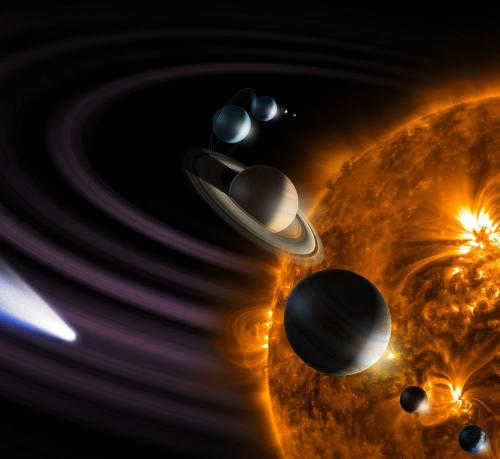
1. There is virtually nothing else in the Solar System besides the Sun
As peculiar as it may sound, in comparison to our star, the mass of all the other celestial bodies in the system is practically negligible. It’s not surprising, though, as the combined weight of all the planets, asteroids, moons, and other objects amounts to only 0.14% of the Sun’s mass.
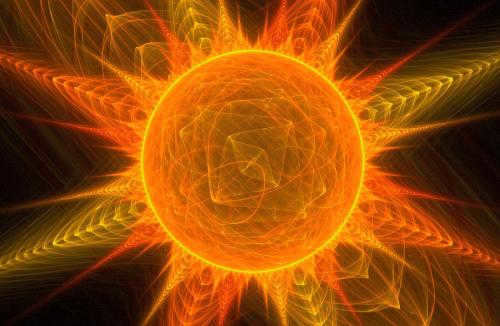
Although the Sun may seem small in the sky, it actually surpasses everything else by a factor of 1000.
For instance, the Earth is 333,000 times lighter than the Sun. However, weight is not the only measure of importance in our world. Therefore, despite our small size, we humans have been able to comprehend the vastness of the cosmos and explore it.
2. Rings are not exclusive to Saturn
Saturn is a planet that is known for its stunning beauty. If it were a supermodel, photographers would be clamoring to capture its essence. This is all due to its magnificent and vibrant rings.
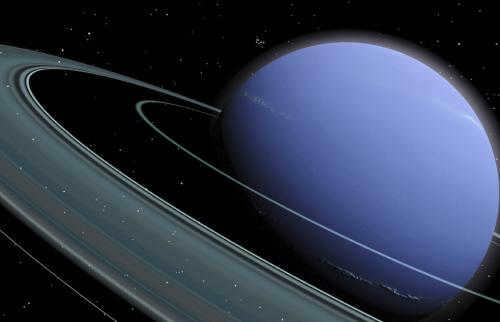
Actually, the remaining giants (Neptune, Jupiter, Uranus) possess their own sets of rings. However, they do have one drawback – they are quite “plump” and thus not always visible. Some can only be observed up close or through a powerful telescope.
3. The magnitude of the solar system
Many individuals possess a significantly underestimated perception of the scale of their celestial abode. It may appear straightforward: where the planets cease, so does the entirety of existence.
Previously, the boundary was marked by Pluto, but subsequent discoveries were made in the Kuiper belt and the Oort cloud. Presently, there is talk of the enigmatic planet X, potentially situated 250 astronomical units away from the Sun.

If there happens to be a planet X, it isn’t very far away.
Interestingly enough, even though the Voyagers were launched way back in 1977, they still haven’t reached the 200 a.u. mark. And yet, the media loudly claims that the spacecrafts have left the solar system. But, this is a slight exaggeration.
In reality, the Sun’s sphere of influence extends up to 100 thousand a.u. (approximately 1 light-year). Therefore, it will take them more than a thousand years to reach the system’s boundaries.
4. Snowy Venus
It’s common knowledge that Venus is far from being a hospitable planet. The surface temperature there ranges from 400 to 500 degrees Celsius.
One might wonder if it’s any cooler up in the mountains. The Maxwell Mountains, towering 11 kilometers above the planet’s surface, seem like a possible escape. However, even there, the temperature is still a bone-chilling 90 degrees below zero.

Did you know that there is a snow cap on the Maxwell Mountains?
Now, you might be wondering what kind of snow can exist at temperatures ranging from 300 to 350 degrees Celsius. Well, according to the latest data, it’s actually made up of bismuth and lead sulfides. It’s quite difficult to imagine snow in the form of lead, but that’s the unique environment of Venus.
If you’re not familiar with it, the notion that the main characters in Homer’s Iliad have any connection to the planets Earth, Mars, and Jupiter may seem improbable. However, this is precisely what some ancient scholars believed.

Accompanying the Earth are asteroids, among other celestial bodies.
In the orbits of planets 4 and 5, there are clusters of asteroids settled in the regions of the Lagrange points. In simpler terms, there are groups of small bodies that follow or move away from the planets, positioned 60 degrees ahead and behind their movement.
These objects have been given the names “Trojans” and “Greeks”.
Hopefully, you are already familiar with many of these facts if you have an interest in the Cosmos. If not, now you know.
Thank you for your attention. Subscribe to stay updated on the information you are interested in.
Engaging Space Facts for Kids. Recommended Cartoons, Shows, and Movies.

If you are interested in exploring the wonders of space, you can enjoy educational cartoons and movies.
There are various cartoons available on YouTube for young children. Additionally, there are educational videos such as episodes of the program “Time to Space!”, the cartoon “Space Yura and Nyura”, and a short film “How to become a cosmonaut”, among many other fascinating options.
The next one is hosted by the iconic actor Morgan Freeman. He not only discusses space, but also explores intriguing topics that are sure to capture a child’s interest. What might extraterrestrial beings look like? Is it possible for humans to surpass the speed of light? How did the universe come into existence? There’s even an episode about zombies, although that topic doesn’t directly relate to space.
If teenagers want to learn more about space and the cosmos, they can check out some popular space movies. For instance, there’s one that has a rating of 12+. This rating is based more on the themes explored in the film rather than any scary words or scenes that would be inappropriate for a child. For inquisitive and enthusiastic children, we would suggest a rating of 10+.
For those looking for a more enjoyable experience, we have made it suitable for viewers aged 16 and above (international PG-13), although we are aware that many parents have allowed children as young as 12 to watch it. However, if you are hesitant to show “this” to your child, at least let them read the book with the same title, which is even more beneficial.
Additionally, we should not overlook our selection of movies: some are suitable for viewers aged 6 and above, while others are suitable for viewers aged 12 and above. These movies are patriotic, documentary, and have a heartfelt message.
Amazing facts about the megamir. Megamir
The megamir encompasses our vast Universe, which has an immense size and is constantly expanding. Within the Universe, there are objects that far surpass the size of our planet Earth and our Sun.
It is not uncommon for the difference between any star outside of our solar system to be tens of times larger than Earth.
The exploration of the megaworld is intricately tied to the fields of cosmology and cosmogony.
Cosmology is a relatively young science, emerging in the early 20th century. Its birth can be attributed to two significant developments in physics: 1) Albert Einstein’s creation of relativistic physics; 2) М. Planck’s creation of quantum physics. Quantum physics revolutionized humanity’s understanding of the Universe.
Regarding the structure of space-time and the structure of physical interactions, there has been significant research conducted.
Another significant contribution to our understanding of the expanding Universe came from A. A. Friedman’s theory, which was later proven by E. Hubble in 1929. Hubble’s discovery confirmed that the Universe is indeed expanding. However, at that time, the reasons behind this expansion were still unknown. It was only through the application of the results obtained from the study of elementary particles in modern physics that the reasons for the expansion of the Universe were established.
Cosmogony, a branch of astronomy, focuses on studying the origins of galaxies, stars, planets, and other celestial bodies. Currently, cosmogony can be divided into two main parts: 1)
The origin of the solar system. This particular aspect (or type) of origin is also known as planetary origin; 2)
Laplace further advanced Kant’s theory on the origins of the solar system. He elaborated on the hypothesis of the Sun and planets forming from a pre-existing rotating gas nebula, taking into consideration the key distinguishing features of our solar system.
Astronomy Unveiled. Enigmas of the Universe that Stump Astronomers

In the vast expanse of deep space, thousands of light-years away from our planet, lies an enigma that eludes complete comprehension by the human intellect. We have endeavored to present a simplified account of the awe-inspiring phenomena occurring beyond our solar system.
Obscure vitality
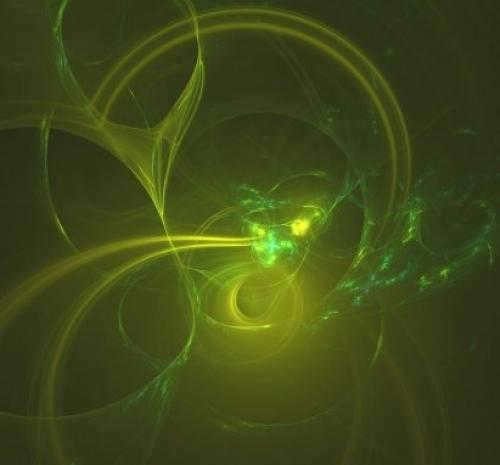
In 1998, researchers at NASA, utilizing the Hubble telescope, made the determination that the expansion of the universe is occurring at a much faster rate than previously believed. Astronomers came to the conclusion that the vast expanse of interstellar space is comprised of approximately 70% of a mysterious “energy fluid”.
Through the examination of this enigmatic substance, scientists have been able to posit that the continual expansion of space somehow generates its own energy, thereby accelerating the process of expansion itself. The origins of this dark energy remain elusive, with its existence only being inferred due to its complete invisibility.
Considering the fact that 70% of the cosmos is filled with this enigmatic energy and an additional 25% is composed of dark matter, it becomes apparent that 95% of the Universe is still shrouded in a “dark forest” of unknowns for humanity. This realization is quite profound when one contemplates the vast extent of our ignorance concerning the cosmos….
The magnificent focal point
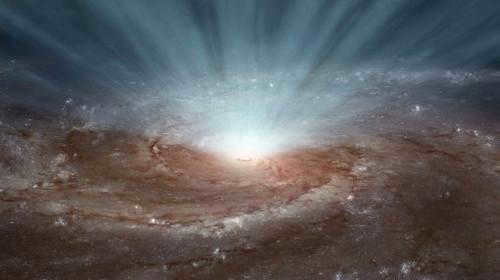
>>> >>>
Each and every one of us has experienced a dreadful nightmare of being trapped with no way out. In reality, we are living in this very nightmare: the Milky Way and other galaxies are hurtling towards a region of space at a staggering speed of 2.2 million kilometers per hour, a place that remains an enigma to us. All we know is that it is inhabited by an entity possessing an immense gravitational force. Scientists have named it the Great Center of Attraction.
It has been humorously referred to as a “cosmic murderer” that lures its prey into a recreational vehicle with grimy windows, obscuring the view of what is happening inside.
Star KIC 8462852

>>> >>>
In the pursuit of new celestial bodies, contemporary scientists employ a method that involves measuring the amount of light emitted by a star. If a planet happens to pass in front of the star, the intensity of the radiation diminishes. By analyzing the frequency and duration of this decrease, astronomers can make educated assumptions about the characteristics of the planet.
The celestial body known as KIC 8462852 can be found in the constellation Cygnus, approximately 1400 light-years away from our planet. At irregular intervals, this star experiences a significant drop in brightness, exceeding 20%. The most plausible explanation for this phenomenon is that a planet is traversing its orbit and casting a shadow. Back in the 1960s, renowned American physicist Freeman Dyson proposed an intriguing hypothesis, suggesting that advanced extraterrestrial beings might be responsible for constructing a complex orbital structure around their own planet. This network of satellites would be designed to capture and harness the star’s emitted light.
While there is no conclusive evidence to support this hypothesis, it is possible that everything can be proven. Dyson’s extensive research has provided a clear understanding of the situation. Many of his peers believe that the mysterious dimming of the star is not due to alien-built orbital technology, but rather a result of a cluster of asteroids and comet remnants.

Astronomers initially began discussing the super void in the Eridanus constellation following their investigation of the cosmic microwave background. Through this research, they unearthed an immensely vast expanse of space (approximately one billion light-years in diameter), devoid of any substantial presence of dark matter or energy.
There is a distinct possibility that humanity has stumbled upon a potential “gateway” to a parallel universe, as the prevailing theory suggests that true emptiness does not exist within space.
Zombie stars
Rephrase the text, making it unique, using the English language and preserving the HTML markup:
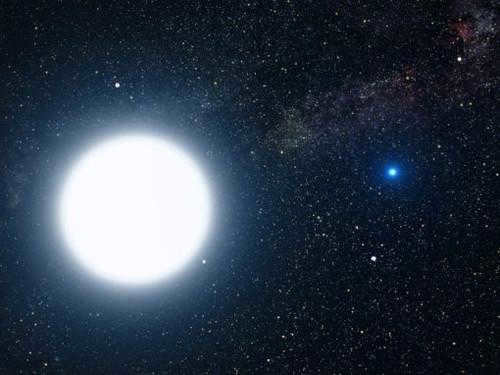
>>> >>>
Indeed, this is a playful term for a unique type of stars, but they do exist in reality. Following a supernova eruption, certain white dwarfs manage to “survive”. They extract hydrogen from nearby stars and continue to emit a significant amount of light for a considerable period of time. The powerful X-ray radiation emitted by these stars is quite reminiscent of the “howl” through which zombie stars consume their neighboring stars.
These cosmic “undead” do not pose any danger to the existence of life on Earth – once they reach a critical mass, they explode and vanish forever.

